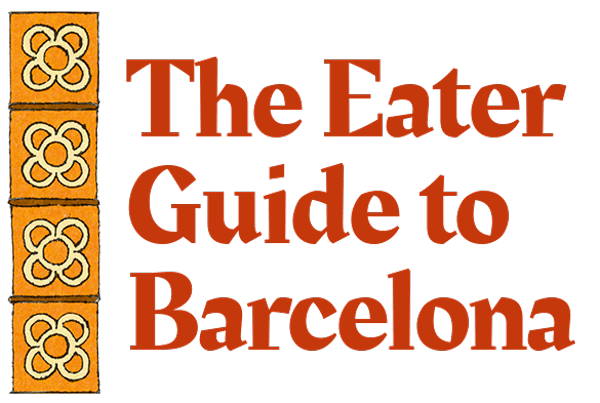People have always come to Barcelona with grand ambitions. Now that visitors are slowly ebbing back into the city, they want to see all the sights, absorb all the culture, and of course dive deep into the city’s famous cuisine, bouncing effortlessly between vermouth bar and paella specialist without missing a beat. But too often, travelers end up losing out on some of Barcelona’s best eating thanks to the intricacies of the Spanish timetable, where meals likely happen at a different hour than many foreigners (Americans, anyway) are used to. Try to eat lunch too early — say, noon — and you’ll be searching fruitlessly for something other than a bocadillo, a single slice of jamón on baguette. Get caught hungry before the restaurants open for dinner around 9 and you’ll find yourself emptying your wallet for snacks and abandoning crucial stomach space. The rules are just different here — traditionally there are six distinct meals, for one — and adapting faster means eating better. Noshing like a local is a delicate dance, so here’s a quick guide to help you make sure you don’t miss a meal.
:no_upscale()/cdn.vox-cdn.com/uploads/chorus_asset/file/22793785/GMC_3843.jpg)
The Timeline
7 - 9 a.m.
Desdejuni / Desayuno (Breakfast)
The workday in Spain generally begins at 9 a.m., so breakfast at home falls some time before that. With the 10 a.m. almuerzo on the horizon, many Spaniards skip this step altogether, but those who eat at home might indulge in a slice of bread with olive oil and tomato, a few slices of jamón, or some fruit.
10 - 11 a.m.
l’Esmorzar / Almuerzo (Mid-Morning Snack)
Almuerzo is an indispensable part of the local diet. It’s built into school schedules, and for many adults it’s the first meal of the day. It’s mostly designed to stave off hunger until a typically heavy three-course lunch, so most tuck into a simple sandwich, a slice of quiche-like tortilla made with egg and potatoes or other veggies, or just a croissant and a coffee.
12 - 2 p.m.
La Hora del Vermut (Vermut Hour)
At noon on weekends, bars are crowded with friends and families having a drink — often vermouth, sometimes not — and chatting over small bites like canned cockles, ensaladilla rusa (a potato salad), and anchovy-stuffed olives. It’s an essential ritual, and a good way to get an early meal in if you can’t wait for the traditional lunch hour. And if fortified wine at noon sounds like a bit much, you can also order it after dark.
:no_upscale()/cdn.vox-cdn.com/uploads/chorus_asset/file/22793774/GMC_4060.jpg)
:no_upscale()/cdn.vox-cdn.com/uploads/chorus_asset/file/22793781/GMC_6128.jpg)
2 - 3:30 p.m.
El Dinar/La Comida (Lunch)
La comida is the main event of the day, and is not to be missed. It’s typically three filling courses, including a starter, a main plate, and either dessert or coffee. During the week many places serve a menú del día, a fixed-price lunch special offering a few choices for each course. With the influx of foreign companies to the city and the economic impulse to catch up with Northern European productivity standards, this meal is becoming less important. Old habits die hard, though, and while some stay near the office and have a quick bite, many still sit for a menú at midday.
5:30 - 7:30 p.m.
El Berenar/La Merienda (Mid-Afternoon Snack)
Merienda is typically when children head home from school with a croissant or foil-wrapped entrepà (sandwich) in one hand and a Cacaolat (Barcelona’s favorite brand of chocolate milk) in the other — something to tide them over until dinner, still hours away. While kids’ merienda is portable, you can take a seat and enjoy yours with an afternoon coffee, even if it’s descafeinado (decaf). Just don’t order a cafe con leche this late in the day.
:no_upscale()/cdn.vox-cdn.com/uploads/chorus_asset/file/22793783/GMC_5844.jpg)
8:30 - 10 p.m.
La Hora del Aperitiu/La Hora del Aperitivo (Pre-Dinner Drinks)
When people get off work, aperitivo hour begins. In Barcelona, this is less a ritualistic meal than it is in Madrid, and more an excuse to meet a friend for a beer and some snacks like pimientos de padrón, tiny Catalan arbequina olives, and marinated sardines while you’re figuring out what to do for dinner.
9 - 11 p.m.
El Sopar/La Cena (Dinner)
When eaten at home, this meal can be very light, sometimes even just a plate of steamed vegetables with olive oil or a bowl of yogurt and some fruit. That said, Barcelona’s restaurants are getting back to being packed, especially in the summer, and the food can range from classic Catalan feasts to ramen to chicken wings.
Florida native Melissa Leighty is a freelance writer and photographer currently based in Barcelona, Spain, as well as the owner of Barcelona’s Salut Wine Studio. Gerard Moral is a Barcelona born and based photographer specializing in portrait, travel, and lifestyle photography.
/cdn.vox-cdn.com/uploads/chorus_image/image/70046666/GMC_3851.0.jpg)
